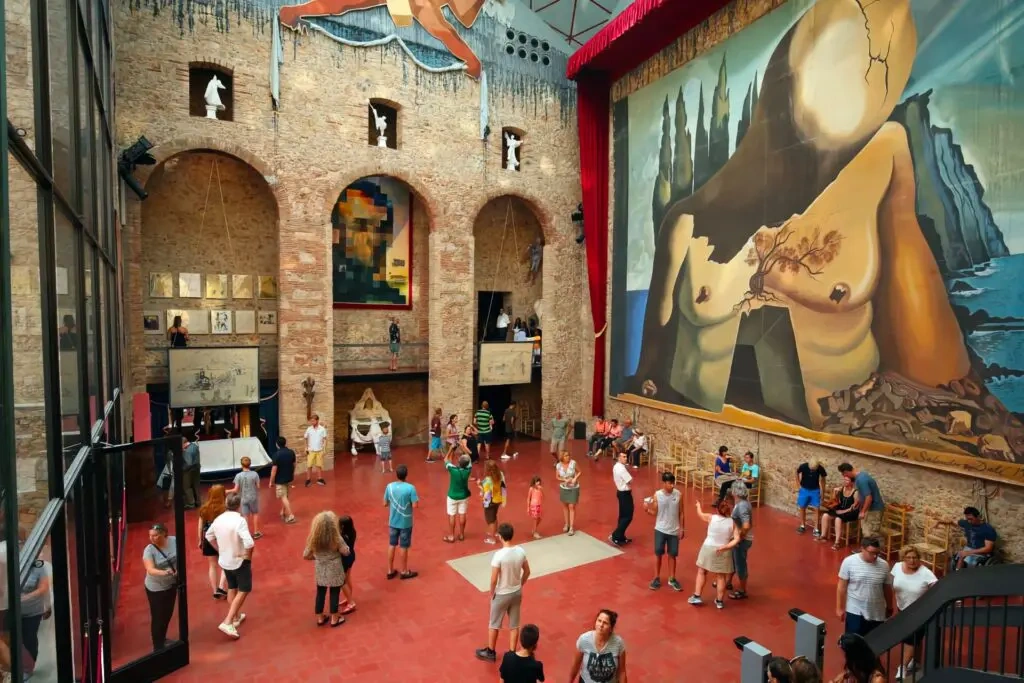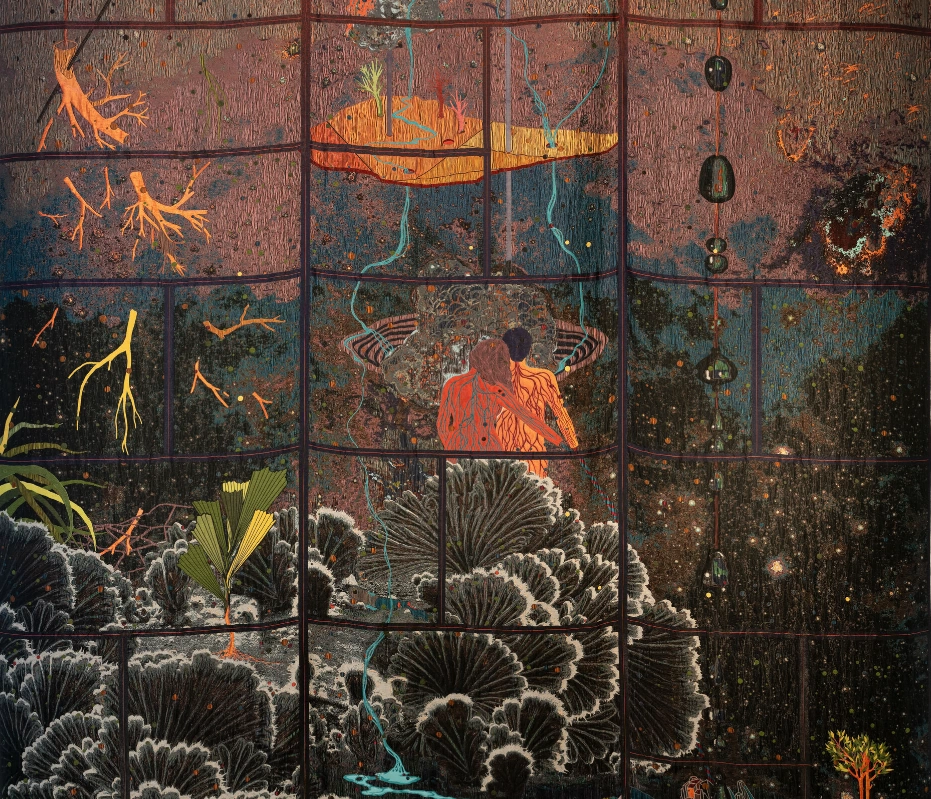Dating back to the late 18th century, the legendary collection of the Rothschild family encompasses art and objects of unparalleled quality
‘No price is too high for the acquisition of true masterpieces,’ wrote Baron James Mayer de Rothschild in 1855. The patriarch of the French branch of the dynastic Rothschild family, James was a scholarly and insatiable connoisseur whose private collection was one of the most esteemed of his era. Along with his wife, Betty, and later his son Alphonse, James developed a museum’s worth of art and objects that he meticulously displayed throughout his many residences.

Trái: James de Rothschild by Hippolyte Flandrin;
Right: Portrait of Betty, Baroness James de Rothschild, head and shoulders with clouds, school of Sir Thomas Lawrence, c. 1825.
Reproduced with the permission of The Trustees of the Rothschild Archive.
Spanning French furniture, Renaissance jewellery, Old Master paintings, Urbino porcelain and more, the sales showcase the unparalleled quality of items assembled across two generations of exceptional collectors.
‘Equals of the great merchant princes’
When James expanded the family’s banking empire, de Rothschild Frères, to France in the early 19th century, he swiftly became a powerful figure in the country. His influence grew as he established the firm as leading banker to the French state, financed the construction of railways and mines and invested in outside trades like wine and tea. Over time, his business savvy made him one of the richest men in the world.
Unfettered in what they could buy, James and Betty amassed a collection that underscored their luxurious way of life. ‘Here we have a family who had made, in two to three generations, the biggest fortune in Europe,’ says Jonathan Rendell, Deputy Chairman at Christie’s Americas. ‘They were not just wealthy, they were a political force. Their collection reflects a family who saw themselves as equals of the great merchant princes of Italy and the various German royal families.’
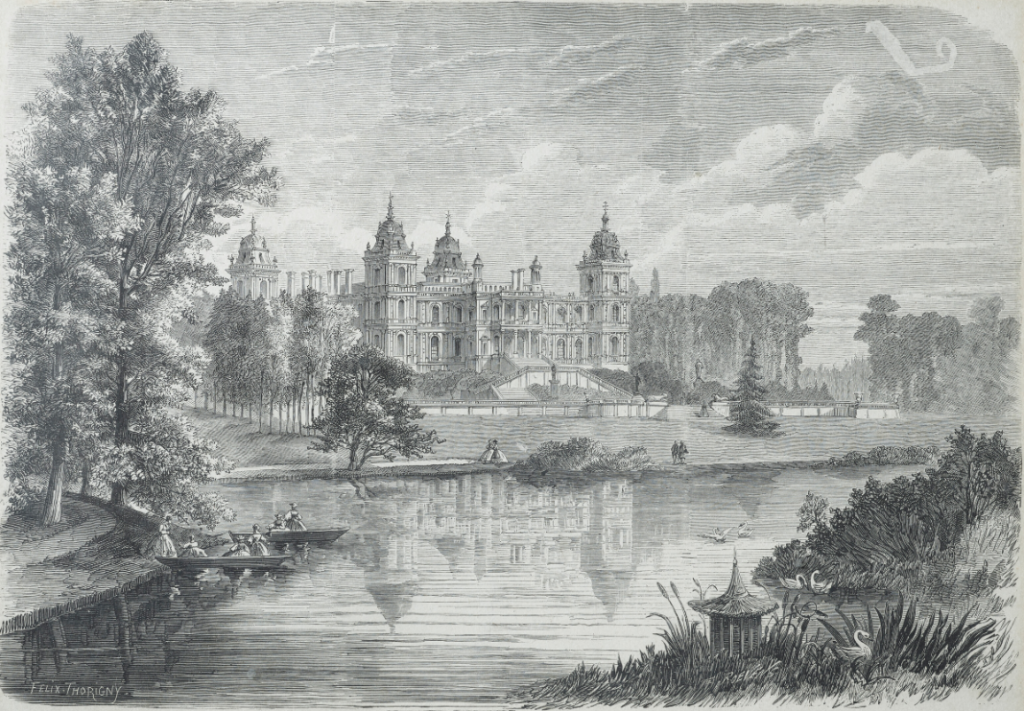
Château de Ferrières
James’s ambitions were reflected in the splendour of his many properties. The one most emblematic of his status was Château de Ferrières, a sprawling estate east of Paris. Designed by the architect Joseph Paxton, known for the Crystal Palace in London, Ferrières was a lavish manor rendered in the Neo-Renaissance style. It boasted eighteen suites of apartments on the second floor, an opulent front hall inspired by the Doge’s Palace in Venice and a railway that brought food from the kitchen to the dining hall. Throughout the château’s many rooms were objects from the family’s ever-growing collection. The property was donated by the Rothschilds to the French government in 1975.
Their residence in Paris, Hôtel de Talleyrand, was another emblem of James’s wealth, and many of the objects that will come to auction in October adorned its rooms. The historic palace was built between 1767 and 1769 for Louis Phélypeaux, Comte de Saint-Florentin, who served as a State Secretary and was an influential friend of King Louis XV. Today, it houses the United States Embassy in Paris and was the headquarters for The Marshall Plan.
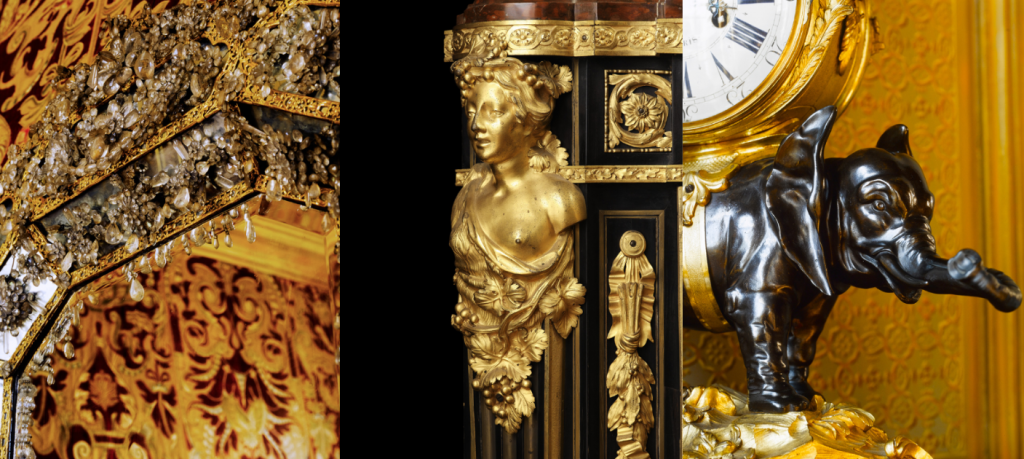
Left: Detail of an Italian rock crystal and embossed giltcopper mirror, late 17th century. 56 in (142 cm) high, 55 in (140 cm) wide. Estimate: $150,000-250,000;
Center: Detail of a pair of late Louis XV ormolu-mounted, brass-inlaid, Japanese lacquer and Ebony meubles à hauteur d’appui, c. 1765-70.
40¼ in (122.5 cm) high, 36¼ in (92 cm) wide, 17¼ in (44 cm) deep,. Estimate: $300,000-500,000;
Right: Detail of a Louis XV patinated-bronze and ormolu mantel clock ‘à l’éléphant,’ mid-18th century. 28½ in (73 cm) high, 22 in (56 cm) wide, 14 in (36 cm) deep. Estimate: $70,000-90,000.
All offered in Rothschild Masterpieces on 11 October 2023 at Christie’s in New York.
‘There’s this idea of sumptuous domesticity,’ says Rendell of the Rothschild taste, which combined extravagance and modern convenience. ‘You enter a house that is also like a museum, but it’s full of comfortable chairs. Everywhere you look there are great things.’
Items of the utmost rarity
As a collector, James was drawn to items of supreme rarity, such as a series of gilded leather panels depicting The Triumph of David that were built for the palatial residence of Schloss Weißenstein. The collection was also replete with wonders from around the globe, from Maiolica porcelain by the celebrated painter Francesco Xanto to a 17th-century Medallion Ushak carpet from the Ottoman Empire.

Left: Detail of The Triumph of David, c. 1650. Painted and embossed leather panels, laid down on canvas. 133 × 665 in (340 × 1690 cm). Estimate: $1,000,000-2,000,000;
Right: Francesco Xanto Avelli, A large Urbino Maiolica documentary armorial Istoriato charger, 1541. 18 in (46.7 cm) diameter. Estimate: $250,000-400,000.
Both offered in Rothschild Masterpieces on 11 October 2023 at Christie’s New York.
When Alphonse took ownership of the collection after the death of his father in 1868, he expanded its breadth, with a particular focus on masterworks of Dutch painting. One of his prized acquisitions was Gerrit Dou’s 17th-century work A young woman holding a hare with a boy at a window. The painting illustrates Dou’s prodigious talents, showing off his masterly technique depicting a variety of materials and textures: stone, glass, tapestry, wicker, feathers and fur.
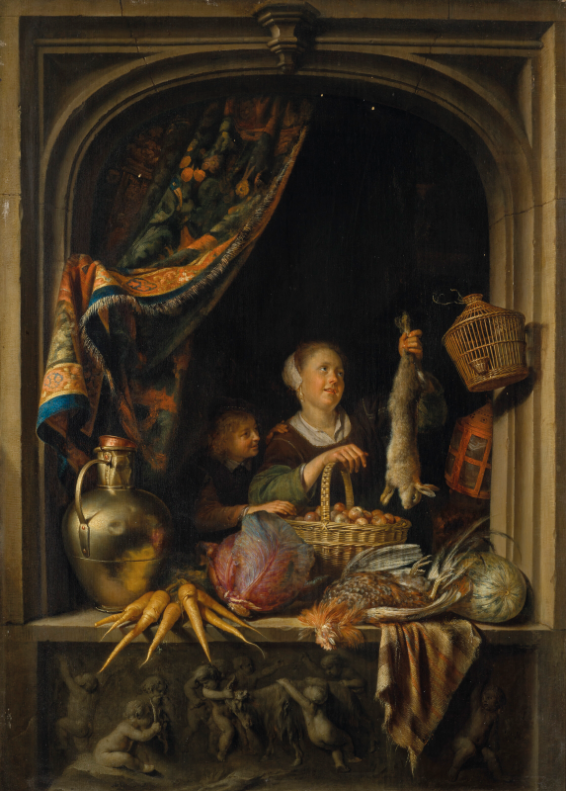
Gerrit Dou (1613-1675), A young woman holding a hare with a boy at a window, 17th century.
Oil on panel. 20 × 14½ in (53.2 × 37.8 cm). Estimate: $3,000,000-5,000,000.
Offered in Rothschild Masterpieces on 11 October 2023 at Christie’s in New York.
Collecting became a family tradition, with future generations becoming custodians of these treasures while also deepening the breadth of their holdings. ‘The Rothschilds had this incredible appetite for the best,’ says Dominic Simpson, Senior International Consultant, European Ceramics. ‘Not just of the grand, but also rare examples of a specific style or pieces of scholarly interest. They were legendary collectors in that way.’
Le goût Rothschild
The style developed across their manor homes is known today as le goût Rothschild. Through lavish textiles, gilding, works of unmatched provenance and ornate architecture, the family established interiors known for their grandeur, and their collection is an embodiment of this taste.
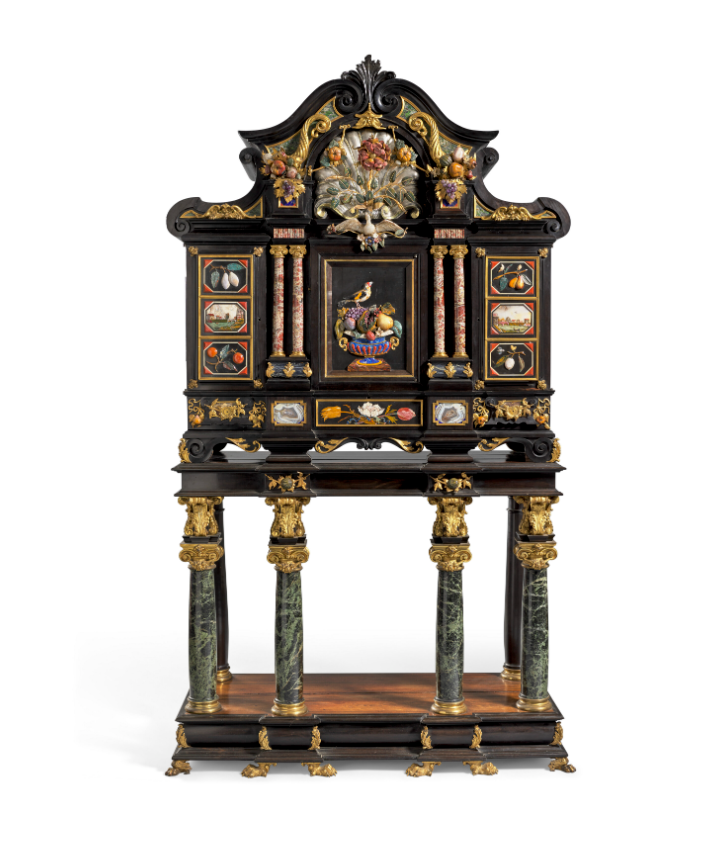
An Italian ormolu-mounted pietra dura and ebony cabinet-on-stand; the cabinet, second half of 17th century,
the pietra dura panels, modified in the 18th century,
with further embellishments in the mid-19th century, including the stand.
78 in (198.5 cm) high, 45 in (114 cm) wide, 18½ in (47 cm) deep.
Estimate: 300.000-500.000 USD.
Offered in Rothschild Masterpieces on 11 October 2023 at Christie’s in New York.
‘Walking into the Château de Ferrières was like entering an alternative world,’ reflects Christiane de Nicolay Mazeray, the art director for the sale, who grew up spending time at Ferrières. ‘It is a world of porcelain, silver-gilt, lacquered furniture and pietra dura cabinets, where each and every object has a story to tell.’
Held in the family for generations, these objects illuminate a history of discerning taste that continues to resonate today. To own one of these cultural rarities presents an incomparable opportunity for any collector.
Source: Christie’s


